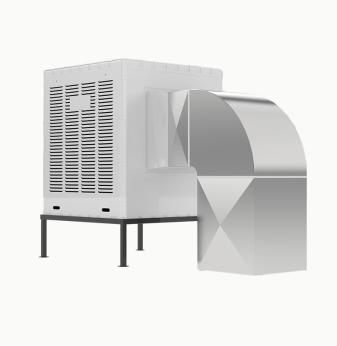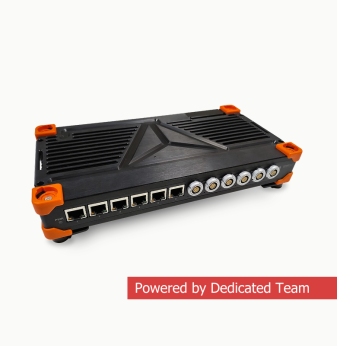Design Trade-offs in Power Path Management for Energy Harvesting IoT Devices

Introduction: Why Power Path Design Matters in Energy Harvesting Systems
IoT devices that rely on energy harvesting — whether from solar, thermal, RF, or kinetic sources — must operate with minimal and highly variable power budgets. Power path management is central to ensuring these devices boot reliably, capture intermittent energy, and prioritize critical functions even under constrained conditions.
This article explores key architectural choices and trade-offs in designing power paths for energy-harvesting IoT systems. We'll examine how to size energy storage, choose the right PMIC or charger IC, handle cold start, and maintain safe system operation across fluctuating conditions.
What Is Power Path Management?
Power path management is the design and control of how power flows from one or more sources — such as solar cells or supercapacitors — through regulators, switches, and storage to the end system.
Good power path design ensures:
- Safe and efficient startup (cold start)
- Optimal use of harvested energy
- Reliable supply for critical components
- Protection against brownouts, overvoltages, or reverse current
Long-tail keyword example: "What is power path management in IoT energy harvesting systems?"
Answer: Power path management governs how energy flows from harvesting sources to storage elements and loads. It ensures the system can boot from low energy states, manage source priority, protect components, and deliver stable voltage for operation.
Key Components in a Harvesting Power Path
- Energy harvester interface: Typically a DC-DC converter or boost converter designed for high impedance sources
- Cold-start regulator: Special circuit to initiate boot at low input voltages
- Storage element: Supercapacitor, Li-ion battery, or thin-film battery
- System power path switch: Controls load connection to supply
- Load switch or buck/boost converter: Conditions power for microcontroller or sensors
- MPPT logic: Maximizes input energy extraction from variable sources
Common Design Architectures
1. Primary-Only Harvesting + Storage
- All energy from harvesting goes to storage
- System wakes when voltage reaches threshold
- Simple but potentially wasteful during short harvest bursts
2. Parallel Load and Storage Supply
- Harvested power flows to system and storage simultaneously
- Requires careful voltage/current regulation
- More efficient in active harvesting environments
3. Priority Power Path Switching
- System selects between multiple sources (harvested, stored, external)
- Prioritizes harvested when available, falls back to battery
- Requires more logic but improves runtime stability
Long-tail keyword example: "How do power path switches work in energy-harvesting IoT devices?"
Answer: Power path switches control how different energy sources supply the system. They route energy to the load from the harvester, battery, or external source depending on availability and voltage thresholds. Smart switches can also block reverse current and enable soft switching.
Cold Start Strategies
Cold start is the ability to power up the system from a fully discharged state:
- Requires ultra-low quiescent current startup ICs (nanoamp range)
- Supercapacitors may need energy accumulation over time
- Design must ensure minimum voltage threshold is met before enabling load
Energy Storage Trade-Offs
| Storage Type | Pros | Cons |
| Supercapacitor | Fast charge/discharge, long life | Low energy density, voltage droop |
| Li-ion Battery | High energy density, stable voltage | Slower charging, safety constraints |
| Thin-film battery | Ultra-low leakage, long cycle life | Low capacity, high cost |
Choose based on:
- System duty cycle
- Energy harvesting profile
- Volume and form factor constraints
PMIC and IC Selection Criteria
When choosing a PMIC for harvesting and power path:
- Input voltage range (e.g., 100 mV cold start)
- Efficiency at µW–mW loads
- Output regulation accuracy
- Number of power paths (harvester, storage, external)
- MPPT or fixed threshold support
- I2C/SPI interface for configurability
Popular ICs:
- TI BQ25570, BQ35100
- e-peas AEM10941
- Analog Devices LTC3106
- Nordic PMICs for nRF platforms
System Reliability Techniques
- Use brownout detection to gracefully shut down before undervoltage
- Add preload resistors or bleed paths to avoid stuck energy in storage
- Log or signal energy availability to firmware for smart scheduling
- Use watchdog timers to reset system if stuck in low-power states

Software Coordination with Energy Availability
Embedded software should adapt behavior based on energy status:
- Measure storage voltage and harvesting input via ADC
- Schedule non-critical tasks during high energy windows
- Store state in FRAM or EEPROM before shutdown
- Use interrupt-driven wake-up rather than polling
Long-tail keyword example: "How to coordinate embedded firmware with energy harvesting availability?"
Answer: Firmware can use ADCs to monitor voltage levels on harvest and storage rails. When energy is low, it can postpone tasks or enter sleep. With sufficient energy, it resumes higher loads like wireless transmission. This coordination ensures predictable operation.
Testing and Validation Methods
- Simulate light, motion, or temperature harvesting conditions
- Profile startup time from cold states
- Use source emulators for predictable power inputs
- Verify power priority switching logic under various scenarios
Summary: Precision Power Control for Sustainable IoT
Energy harvesting offers long-term autonomy for IoT devices — but only with smart power path design. Choosing the right architecture, components, and firmware coordination strategy makes the difference between a device that boots sometimes and one that works every time.
Why Promwad?
Promwad helps companies design and deploy low-power embedded systems with energy harvesting support. Our services include:
- Custom power path and cold start architecture
- Energy storage sizing and protection circuitry
- PMIC configuration and embedded software coordination
- Design validation under real-world conditions
- Integration with BLE, LoRa, NB-IoT for energy-efficient connectivity
Let’s build your next energy-autonomous device with confidence.
Contact us to design your power harvesting IoT product.
Our Case Studies in This Industry








